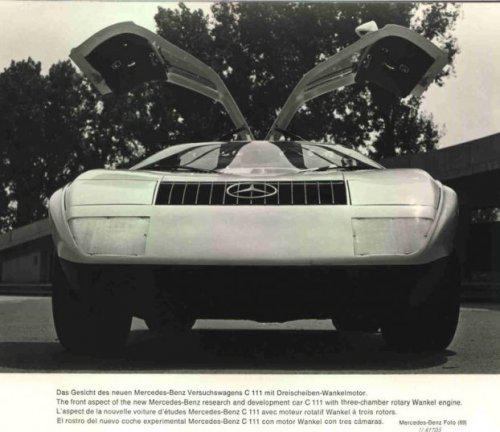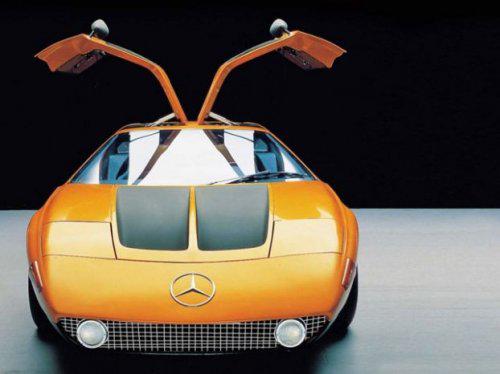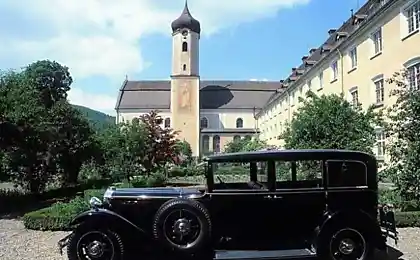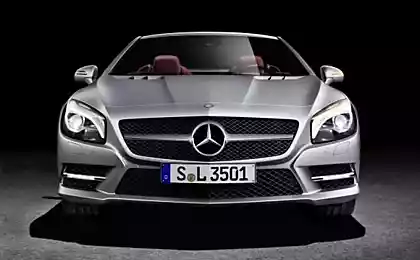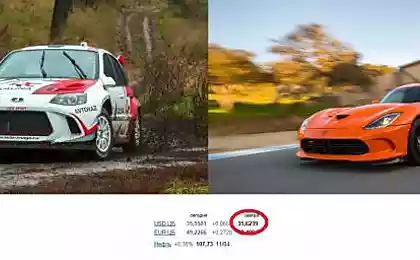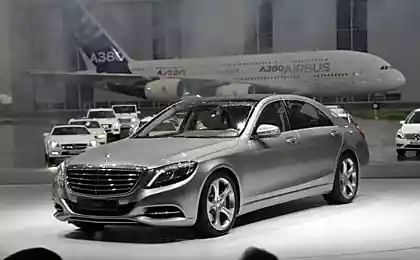1897
1969 Mercedes-Benz C111 (review and photos)

In September 1969 at the Frankfurt Motor Show, Daimler-Benz presented his vision of future cars. The project entitled "C111" demonstrated a new approach in the design and manufacturing of sports cars. Style vehicle with an up doors promised fans of the brand with the three-beam star worthy successor to Mercedes-Benz 300SL «Gullwing». In the spring of next year, in Geneva, was shown a second C111 series with an even more graceful lines of the body low, prompting fans to send in Stuttgart brand signed checks with the face value of non-designated, in an attempt to stake out one of these beauties.
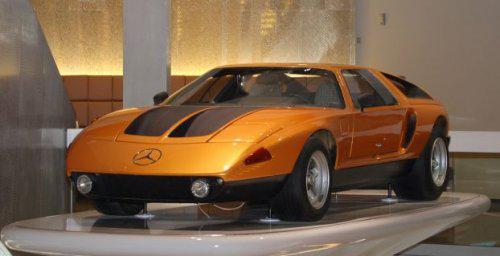
Alas, their dreams did not come true. The plans of the concern was not the release of C111 sport coupe. They were machine-laboratories, research specimens, which were tested aerodynamic fiberglass body connected with the steel structure of the floor.

There was another revolutionary feature, hidden under the body. C111 experimental vehicle was equipped with a rotary-piston engine of Felix Wankel (Felix Wankel).
Invented in the late 20's (Wankel received a patent for his engine in 1929), RAP was first installed on a production car NSU Ro 80 in 1967, after which the invention patents acquired almost all the leading car manufacturers of the world: Alfa Romeo, Daimler -Bents, General Motors, Nissan, Toyota, Mazda and others. Mercedes began cautious experiments with RAP Wankel in 1962, and after the purchase of the patent took active development work. Their results and became Mercedes-Benz C111.

The performance of a vehicle equipped with an engine with three rotors, impressed from the outset. Wankel, mounted on a Mercedes 1969, developed capacity of 280 horsepower, making an easy car to move with a top speed of 260 km / h. Acceleration time to 100 km / h in five seconds. Second C111 (1970), equipped with a four-part engine capacity of 350 hp, 100 km overcame abroad for 4, 8 seconds, accelerating to a top speed of 300 kilometers per hour.

Unfortunately, solving the problems of cooling uneven heat up the motor Daimler-Benz in the 70s was unable to cope with the large consumption, incomplete combustion and, as a consequence, "dirty" exhaust. Blame it were objective reasons - lack of appropriate processing technologies that have become available only after a quarter-century.

